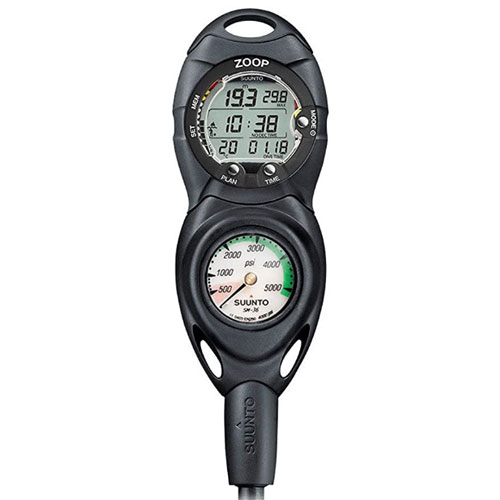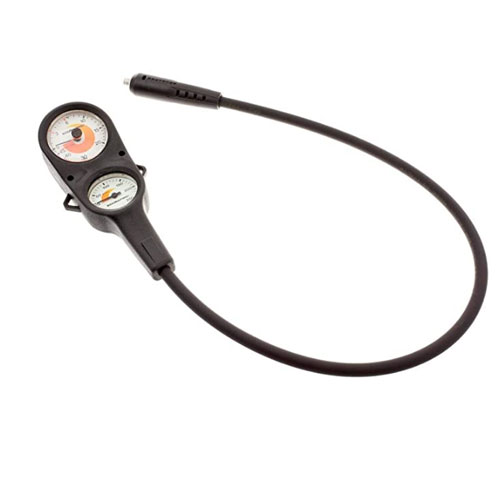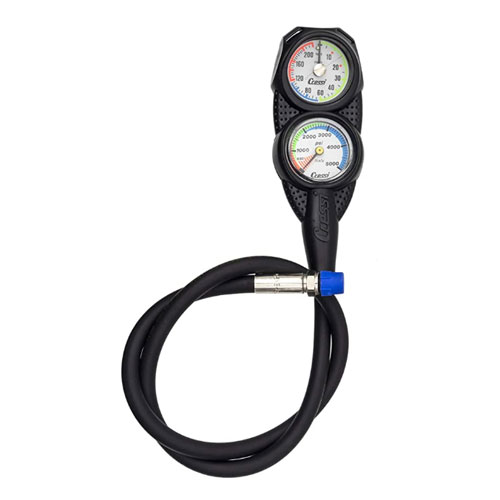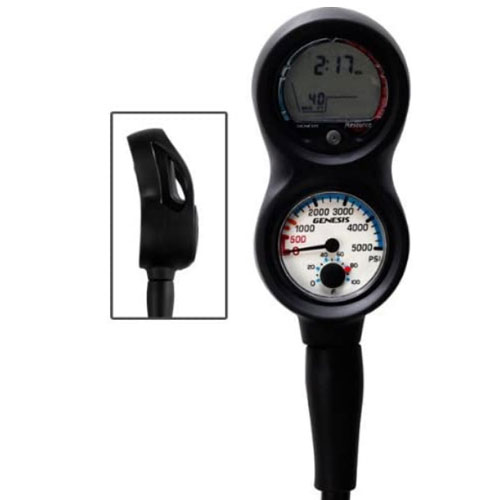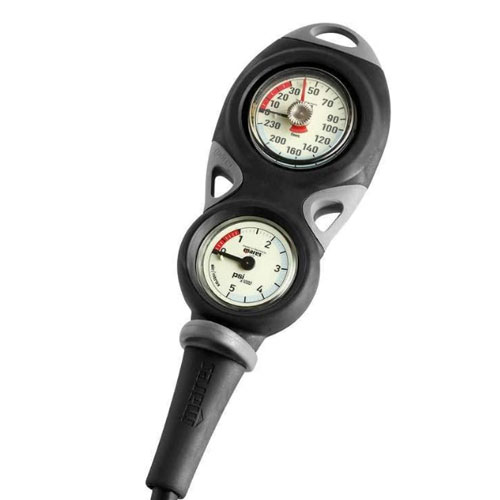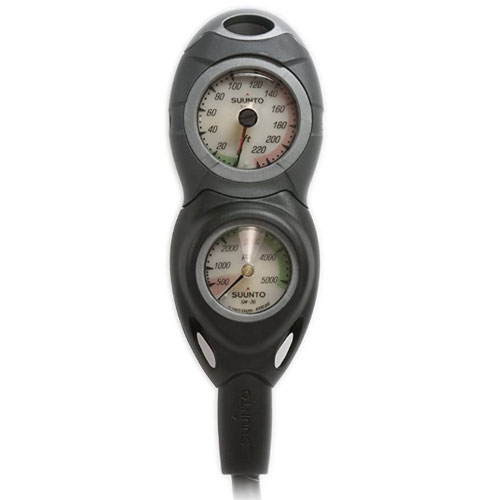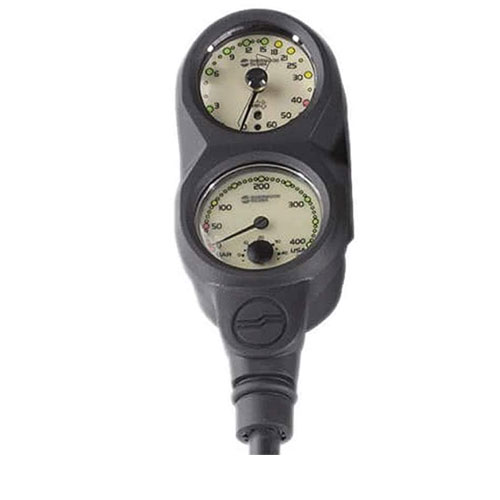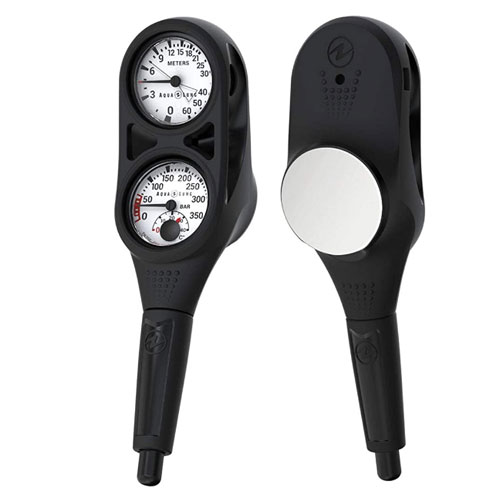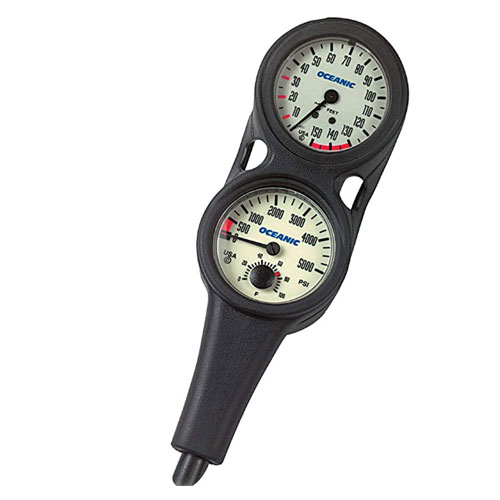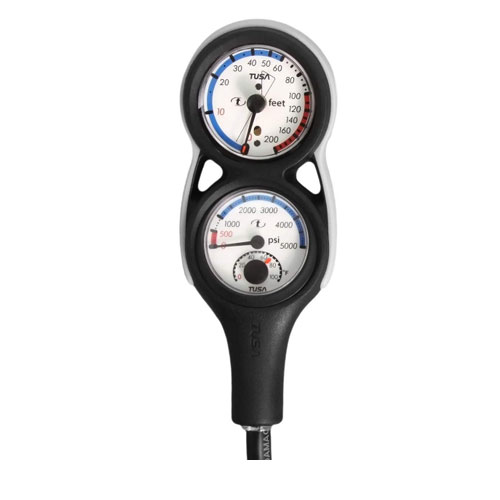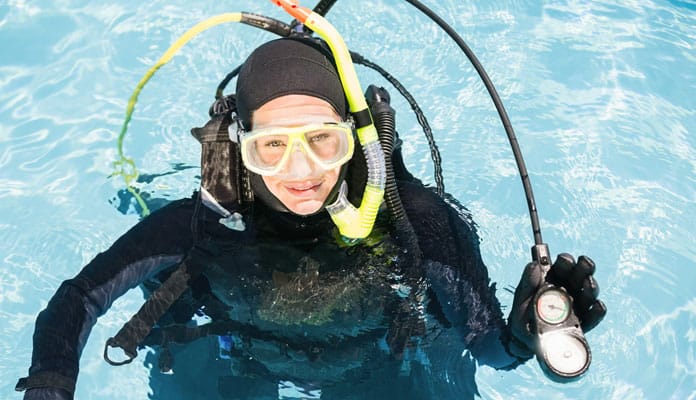
-
1.
-
2.
-
3.
-
4.
-
5.
Besides being aware of their surroundings while diving, there are two things divers must always know. How much air is remaining in their tank and how deep they are. This is normally done with the help of two gauges in a dive console, an SPG, and a depth gauge.
A Submerged Pressure Gauge (SPG) attaches to your first stage regulator by a high-pressure hose. It will give you a real-time reading of the pressure in the cylinder.
Water pressure increases at precious value as you dive. The depth gauge senses the water pressure and reads it out in terms of depth. The use of a dive computer can replace the need for one or both of these gauges. All dive computers can replace the depth gauge, as they measure depth as it is one of the factors it needs to compute bottom time. An air-integrated dive computer can also replace the need for the SPG.
Most scuba diving consoles are designed to hold two gauges, however, some come with a compass. The compass can be front-facing or rear-facing. Many dive computers that are not air integrated will fit in the depth gauge opening. This allows you to remove the depth gauge and add the dive computer, giving you only one place to look for the data you need.
OUR TOP PICK
Suunto ZOOP Diving Computer Scuba Gauge
- Stand Out Features - Why We Love It
- Easy to use
- Impact-resistant
- Digital and analog
Weight: 12 oz
Max Depth: 330 feet
Materials: Metal case
EDITORS CHOICE
ScubaPro Depth And Pressure Gauge
- Stand Out Features - Why We Love It
- Easy to use
- Lightweight design
- Durable
Weight: 1.3 lbs
Max Depth: 150 feet
Materials: Brass/rubber
BEST VALUE
Cressi Sub 200 ft. Mini Pressure Gauge
- Stand Out Features - Why We Love It
- Impact, shock, and scratch-resistant
- Two fastening loops
- Easy to read
Weight: 7 oz
Max Depth: 200 feet
Materials: Metal case
Genesis Resource Pro Computer Gauge
- Stand Out Features - Why We Love It
- Digital and analog
- Logs 50 dives
- Safe and accurate
Weight: 15 oz
Max Depth: 250 feet
Materials: Plastic case
Mares Mission 2 Scuba Gauge
- Stand Out Features - Why We Love It
- Two-year warranty
- Fluorescent dial
- Easy to use
Weight: 22.8 oz
Max Depth: 230 feet
Materials: Elastomer
Suunto Analog Double Gauge
- Stand Out Features - Why We Love It
- Impact-resistant
- All-in-one console
- Easy to read
Weight: 12 oz
Max Depth: 230 feet
Materials: Metal case
Sherwood Compact Console Gauge
- Stand Out Features - Why We Love It
- Compact
- Easy to read
- Double gauge
Weight: 10 oz
Max Depth: 150 feet
Materials: Metal case
Aqua Lung Double Dive Scuba Gauge
- Stand Out Features - Why We Love It
- Easy to read
- Double gauge
- Included thermometer
Weight: 12 oz
Max Depth: 200 feet
Materials: Metal case
- Stand Out Features - Why We Love It
- Strong body
- Temperature gauge
- Fluorescent markings
Weight: 17.6 oz
Max Depth: 150 feet
Materials: Nylon composite
TUSA Platina Dual Analog Console Gauge
- Stand Out Features - Why We Love It
- 12-month warranty
- Max depth indicator
Weight: 21.6 oz
Max Depth: 200 feet
Materials: Polyurethane
- Temperature indicators are being phased out of scuba diving, as nearly every dive computer can accurately read water temperature. If you do opt for a separate gauge, make sure it causes the least amount of clutter possible.
- Maximum depth needles and current depth needles should be colored differently to avoid confusion underwater. Learn your gear through-and-through before diving with it.
- The best way to keep your Scuba Gage while diving is to put it between your waistband and the waist clip.
![]()
Scuba Diving Expert
How To Choose A Scuba Gauge – Buying Guide
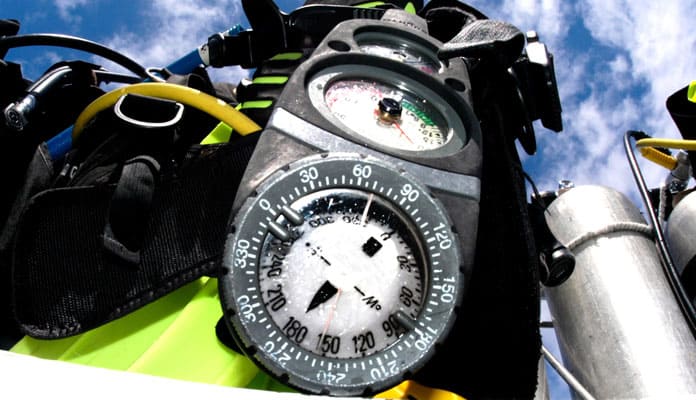
When you come to choose your scuba gauge, you need to choose the unit of measurement for the gauge. The unit of measurement may differ by region, but you may want to find a gauge with a measurement that is from the place you learned to dive or the place you grew up in. Many countries, including the US, use the Imperial system, while many other countries use the Metric System. Choose the system which you find easiest to understand. While diving into an area with a different system, it may be helpful to learn the most common pressures. Such as full tank 200 bar/3,000 psi, half tank 100 bar/1,500 psi, ¼ tank 50 bar/750psi.
You might also look at getting a console with a dive computer instead of a depth gauge. It will save you money.
Temperature Indicator
Many scuba gauges offer additional functionality. One thing to look at when you are buying a gauge is a temperature indicator. This is handy to know if there are any sudden drops in temperature, and when you get into the water, you can ensure that you have the correct clothing on; such as thick enough dive gloves.
Maximum Depth Needle
A maximum depth needle is also a piece of added functionality that can be beneficial. When you are dicing, the needle will stop at your lowest depth and stay there. This helps track your dive, and especially so when you are attempting multi-level dives.
You might also like: Perfect Dive Gloves
Color Coding And Luminescent Dials
When you are diving, you want to be able to see your gauge in any environment, and you also want to be able to see at a glance the depth you are at. The gauge should be easy to read. Look for luminescent dials. This is especially helpful when you get into deeper and darker waters. A pressure gauge can have color coding for when your oxygen is low, and a depth gauge can have color-coded spots to mark out safety stops in deep dives.
Eyelets
You should have a way to attach a retainer or retractor to your dive console. It will allow you to know where it is at all times and keep you from dragging it through mud or coral.
FAQs
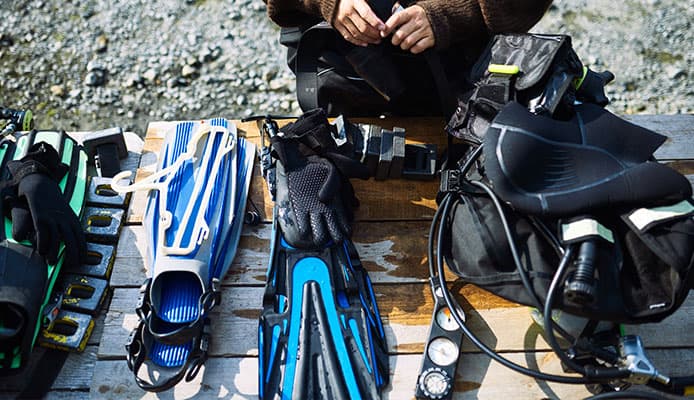
Q: What Is A Scuba Gauge?
Divers need to always know their depth and remaining air. Old fashion mechanical gauges do an outstanding job of measuring these items and giving a diver a way to determine them. They are also relatively inexpensive. An SPG attaches to the high-pressure port and allows the diver to see the tank pressure, the remaining air. A depth gauge measures the water pressure and displays it as depth on the.
Globo Surf Review
Dive computers have changed the way many divers dive. Still, there is a place for analog gauges. Unless your dive computer, if you have one, is air integrated you will still need an analog SPG. Many divers even with a dive computer like to have a depth gauge as a backup.
Take the time to buy the scuba gauge which is right for you, and remember that the gauge could save your life.



